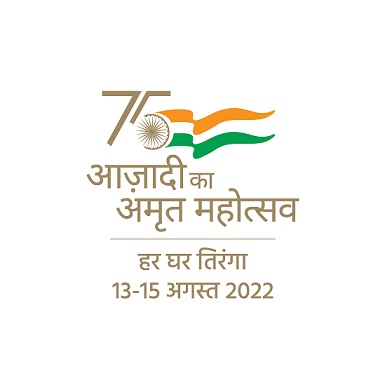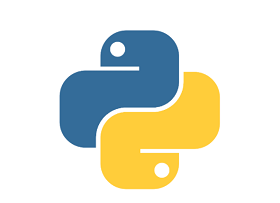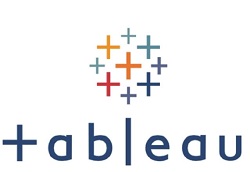Tech Hub Effect: How Den Haag's Innovation Sector is Shaping the Housing Market
The city of Den Haag, traditionally known for its government institutions and international courts, has undergone a remarkable transformation in recent years. The emergence of a thriving tech and innovation ecosystem has created ripple effects that extend well beyond the economy, significantly influencing the city's property landscape and creating new dynamics for residents and investors alike.
Those looking to buy house Den Haag are now navigating a market increasingly shaped by the innovation sector's growth. The city's evolution from purely administrative centre to innovation hub has attracted a diverse pool of professionals, from startup entrepreneurs to established tech specialists, all seeking accommodation that meets their particular needs and lifestyle preferences. This shift has created both challenges and opportunities that prospective buyers should understand before making decisions.
The Rise of Den Haag as a Tech Innovation Centre
The transformation of Den Haag into a technology hub didn't happen overnight. Several factors contributed to this evolution, including strategic government initiatives, the presence of leading educational institutions, and targeted investment programmes designed to nurture innovative enterprises. The establishment of dedicated spaces like The Hague Tech and YES!Delft has provided crucial infrastructure for startups to flourish.
What distinguishes Den Haag's tech ecosystem is its focus on specific sectors rather than trying to compete across all technological domains. The city has carved out specialisations in areas such as cybersecurity, legal tech, and peace-technology applications, leveraging its existing strengths as an international legal and diplomatic centre. This focused approach has allowed for deeper expertise development and more sustainable growth.
The clustering effect has become increasingly apparent as companies in related fields establish themselves in proximity to each other, creating mini-ecosystems within the city. These concentrated zones of innovation have become hotspots that naturally attract talent, services, and, inevitably, housing demand that differs from traditional patterns in important ways.
Impact on Residential Property Trends
The influx of tech professionals has reshaped housing preferences across Den Haag in notable ways. Unlike previous generations of workers, many tech employees prioritise neighbourhoods offering a blend of urban convenience, green spaces, and proximity to innovation districts. Areas once considered peripheral have gained newfound appeal when they offer the right combination of connectivity and quality of life.
Property developers have responded by adapting their offerings to match these evolving demands. New residential projects increasingly feature amenities that appeal to tech workers, such as high-speed internet infrastructure, co-working spaces within residential complexes, and smart home technology integration as standard rather than luxury additions. The definition of premium housing has shifted accordingly.
Housing affordability has emerged as a significant concern as innovation sector growth drives increased competition for properties in desirable locations. Long-term residents sometimes find themselves priced out of neighbourhoods transforming due to tech-driven gentrification, creating social tensions that policymakers and developers must address thoughtfully and proactively.
Emerging Neighbourhood Hotspots
The Binckhorst district represents perhaps the most dramatic example of tech-driven transformation in Den Haag's property landscape. Once an industrial zone with limited residential appeal, it has undergone extensive redevelopment to become a mixed-use area combining innovative workspaces with contemporary living options. Its proximity to the city centre adds to its attraction for tech professionals.
Laakhaven-West has similarly experienced revitalisation, with former port facilities and warehouses converted into striking loft apartments and creative workspaces. The neighbourhood's character blends industrial heritage with modern functionality, appealing particularly to creative technologists and digital designers who appreciate its aesthetic qualities and practical advantages.
For those seeking a more established residential environment, Statenkwartier offers historic architecture combined with excellent connectivity to innovation districts. Its tree-lined streets and period properties provide a different lifestyle option for senior tech executives and professionals who prefer classic charm over ultra-modern developments but still require convenient access to the innovation ecosystem.
Investment Perspectives and Opportunities
Property investors have increasingly recognised the potential of targeting the tech sector demographic in their acquisition strategies. Properties located within a 15-minute commute of major innovation hubs typically command premium returns when configured to meet the specific requirements of this tenant profile. Understanding these needs represents a crucial advantage for successful investment.
The rental market has shown particular strength in areas surrounding tech clusters, with consistently high occupancy rates and above-average yields compared to city-wide averages. Short-term flexibility combined with high-quality specifications tends to outperform traditional long-term, unfurnished offerings, reflecting the sometimes transitional nature of employment in the innovation sector.
When considering investment properties, engaging experienced estate professionals familiar with the unique dynamics of tech-influenced markets becomes essential. Their insights can help identify properties with the right characteristics and locations to capitalise on these trends, potentially avoiding costly misjudgments based on outdated market assumptions about desirability.
Price Dynamics and Market Segmentation
Property valuations across Den Haag show increasing correlation with proximity to innovation centres, creating distinctive price gradients that weren't present a decade ago. Properties within walking distance of major tech hubs have experienced appreciation rates approximately 15% higher than comparable homes in more distant locations over the past five years.
The mid-range market segment has shown particular strength, with two and three-bedroom apartments in well-connected locations experiencing the most consistent demand. These properties hit the sweet spot for tech professionals who typically have above-average incomes but may not yet have reached senior executive levels that might support luxury purchases.
The premium segment has also evolved, with different prioritisation of features than in traditional luxury markets. Energy efficiency, technological integration, and architectural distinctiveness often outweigh traditional status indicators, reflecting the values and preferences of successful innovation entrepreneurs and executives who constitute a growing portion of high-end buyers.
Navigating Purchase Decisions in a Changing Market
For prospective buyers, understanding the influence of the tech sector requires looking beyond traditional property evaluation criteria. Factors such as fibre optic connectivity, co-working options, and proximity to innovation hubs may significantly impact both lifestyle suitability and long-term value appreciation potential in ways not immediately obvious during property viewings.
Navigating this evolving landscape becomes considerably easier with professional guidance from estate agents who understand both property fundamentals and the specific dynamics created by the innovation sector. Their expertise can help identify neighbourhoods experiencing positive transformation rather than temporary hype, a crucial distinction for long-term investment success.
While online property platforms provide basic information, they typically cannot offer the contextual understanding necessary when purchasing in rapidly evolving areas. Real estate professionals can provide historical perspective, development pipeline awareness, and subtle neighbourhood dynamics that make the difference between a satisfactory transaction and an exceptional property decision.
Future Outlook and Development Pipeline
Urban planning initiatives suggest continued support for innovation-friendly development across Den Haag. The recently approved Central Innovation District master plan envisions significant residential components integrated with workspace and leisure facilities, creating new opportunities for those seeking homes in innovation-adjacent locations over the coming decade.
Sustainability features prominently in future development plans, with carbon-neutral building standards becoming increasingly common. This aligns well with the values of many tech professionals, who often prioritise environmental responsibility in their housing choices and are willing to pay premiums for genuinely sustainable features rather than superficial "green" marketing.
Transport infrastructure investments will further reshape accessibility patterns across the city, potentially opening new areas to innovation-sector housing demand. The planned light rail extensions and enhanced cycling infrastructure will create new connectivity corridors that savvy buyers and investors should monitor for early-stage opportunity identification.
Conclusion
Den Haag's transformation into an innovation hub continues to reshape its property market in profound and sometimes unexpected ways. The tech sector's influence extends beyond simple supply and demand equations to fundamentally alter neighbourhood characters, property specifications, and investment potential across different segments of the market. For those looking to purchase in this dynamic environment, understanding these influences and seeking knowledgeable professional guidance from experienced real estate agents has become not merely beneficial but essential for navigating the complexities of a market undergoing such significant evolution. By recognising these patterns and working with specialists who understand both property fundamentals and innovation sector dynamics, buyers can make informed decisions that align with both their immediate needs and longer-term objectives in this fascinating property landscape.
 aliumair
23rd October 2025
aliumair
23rd October 2025
ì‹ ìš©ì¹´ë“œ 현금화 ì™¸ì— ë‹¤ë¥¸ ë°©ë²•ì€ ì—†ë‚˜ìš”? ìžë™ì°¨ 담보대출; ì €ì‹ ìš©ìž ëŒ€ì¶œ; 소액대출; 비ìƒê¸ˆ 대출; ì†Œì•¡ê²°ì œ 현금화; ì •ë³´ì´ìš©ë£Œ 현금화. ì‹ ìš©ì¹´ë“œ 현금화는 어떻게 ì‹ ìš©ì¹´ë“œí˜„ê¸ˆí™”
 aliumair
23rd October 2025
aliumair
23rd October 2025
ì‹ ìš©ì¹´ë“œ 현금화 ì™¸ì— ë‹¤ë¥¸ ë°©ë²•ì€ ì—†ë‚˜ìš”? ìžë™ì°¨ 담보대출; ì €ì‹ ìš©ìž ëŒ€ì¶œ; 소액대출; 비ìƒê¸ˆ 대출; ì†Œì•¡ê²°ì œ 현금화; ì •ë³´ì´ìš©ë£Œ 현금화. ì‹ ìš©ì¹´ë“œ 현금화는 어떻게
 aliumair
23rd October 2025
aliumair
23rd October 2025
ìœ í¥ì•Œë°”는 ìˆ ì§‘, í´ëŸ½, 노래방 등 ìœ í¥ì—…소ì—ì„œ 하는 다양한 아르바ì´íŠ¸ë¥¼ 통ì¹í•©ë‹ˆë‹¤. 주로 ì•¼ê°„ì— ì´ë¤„지며 룸알바, 밤알바, 여성알바 등 여러 ì´ë¦„으로 불립니다. ë†’ì€ ìœ í¥ì•Œë°”
 aliumair
18th October 2025
aliumair
18th October 2025
윈가ë¼ì˜¤ì¼€ëŠ” 송파구 ìž ì‹¤ì— ìœ„ì¹˜í•´ìžˆëŠ” ìž ì‹¤ì§€ì— ìµœê³ ë¡œ ìžë¦¬ìž¡ê³ 있는 ê°€ë¼ì˜¤ì¼€ìž…니다. 윈가ë¼ì˜¤ì¼€
 aliumair
18th October 2025
aliumair
18th October 2025
Thank you so much for the post you do. I like your post and all you share with us is up to date and quite informative, i would like to bookmark the page so i can come here again to read you, as you have done a wonderful job.why is shane oakley not on the show anymore
 aliumair
8th September 2025
aliumair
8th September 2025
I really impressed after read this because of some quality work and informative thoughts . I just wanna say thanks for the writer and wish you all the best for coming!. í™ëŒ€ê°€ë¼ì˜¤ì¼€
 jack
23rd August 2025
jack
23rd August 2025
They can be a awesome page, Regards just for imparting others this forum. Keep on offer. 79club
 Semsapiel
18th August 2025
Semsapiel
18th August 2025
It is fascinating and exciting to share and explore together with lots of great content about new technology topics. Geometry Dash, a game with a variety of levels and creative game modes, will keep players engaged for a long time. It is fascinating and exciting to share and explore together, and there is a lot of great content about new technology topics. Let us embark on this exciting geometry dash adventure and overcome all obstacles!
 Ateeb
5th August 2025
Ateeb
5th August 2025
The idea thinks wonderful you just read this sort of helpful along with exclusive content on the internet sites. nearby museum
 Bevis
7th July 2025
Bevis
7th July 2025
Den Haag's transformation into a tech innovation hub is fascinating and has certainly reshaped the housing market dynamics. As someone who has navigated this evolving landscape, I appreciate how the city's unique blend of urban convenience and green spaces mirrors my experience with color block jam, where creativity meets functionality. It's exciting to see how these changes will continue to influence both living spaces and investment opportunities in the future.
 Nasroal
25th June 2025
Nasroal
25th June 2025
speed stars unblocked battle becomes a fierce confrontation as you race against your own ghost or the ghost of a world-record run, which increases replayability even further.
 Gene
20th May 2025
Gene
20th May 2025
speed stars light up the track with their electrifying performances, redefining what’s possible in athletics.
 jason
14th May 2025
jason
14th May 2025
The educational aspect of Worldguessr makes it a great tool for learning geography in a fun and engaging way.
 davis
8th May 2025
davis
8th May 2025
Do you see a similar shift in real estate consumer behavior in other tech cities, such as Eindhoven or Utrecht? Baseball Bros Game
 Helen
8th May 2025
Helen
8th May 2025
You don’t just race in Speed Stars — you become one with the machine. Feel the grip of the tires, the slide of the drift, and the thrill of chasing victory. It's racing in its purest form.
Please rotate your device
We don't support landscape mode on your device. Please rotate to portrait mode for the best view of our site





